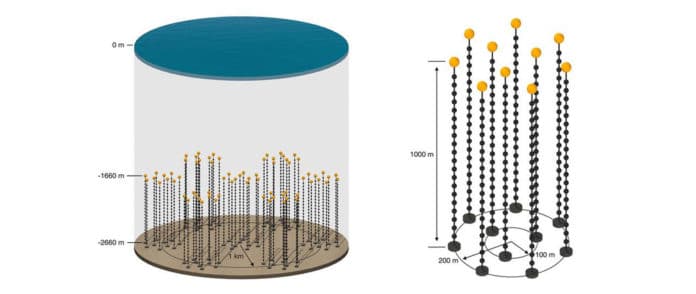Prof. Elisa Resconi from the Technical University of Munich (TUM) has started an international initiative to build a neutrino telescope several cubic kilometers in size in the northeastern Pacific. The aim is to explore the cosmic origins of elementary particles with even higher energies.
The light that arrives from distant celestial objects to explore the Universe. Be that as it may, light doesn’t disclose much about the most noteworthy energy events beyond our Galaxy, for example, the jets of active galactic nuclei, gamma-ray bursts, or supernovae, as photons in the upper gamma-ray range lose their extreme energies on their long way through the Universe through association with different particles.
Like light, neutrinos traverse space at the speed of light (almost), but they rarely bond with other particles. They maintain their energy and direction. Thus they are unique messengers of the highest energy universe.
In 2013, the IceCube Neutrino Observatory detected extragalactic neutrinos for the first time. Since then, astronomers are keen to understand their cosmic origins and which physical mechanism has accelerated them to such extreme energies.
However, to solve the puzzle, more detectors with even larger volumes than the cubic-kilometer-sized IceCube Observatory are required. Because neutrinos cannot be observed directly, only through Cherenkov radiation, can the detectors be located in ice or water.
Prof. Esconi has now started an international initiative for a new neutrino telescope located in the Pacific Ocean off the coast of Canada: the Pacific Ocean Neutrino Experiment (P-ONE), in collaboration with a facility of the University of Victoria, Ocean Networks Canada (ONC), one of the world’s largest and most advanced cabled ocean observatories.for a new neutrino telescope located in the Pacific Ocean off the coast of Canada: the Pacific Ocean Neutrino Experiment (P-ONE).
The first P-ONE segment, the Pacific Ocean Neutrino Explorer, a ring with seven 1000-meter-long strings with 20 detectors each, is planned to be installed in ONC’s marine operation season in 2023/24 in collaboration with various Canadian universities.
Darren Grant, professor at Michigan State University, USA, said, “Astrophysical neutrinos have unlocked new potential for significantly advancing our knowledge of the extreme Universe. P-ONE represents a unique opportunity to demonstrate large-scale neutrino detector deployment in the deep ocean, a critical step towards reaching the goal of a globally connected neutrino observatory that would provide peak all-sky sensitivity to these ideal cosmic messengers.”
Journal Reference:
- M. Agostini et al.: The Pacific Ocean Neutrino Experiment Nature Astronomy, Sept. 8, 2020 – DOI: 10.1038/s41550-020-1182-4
